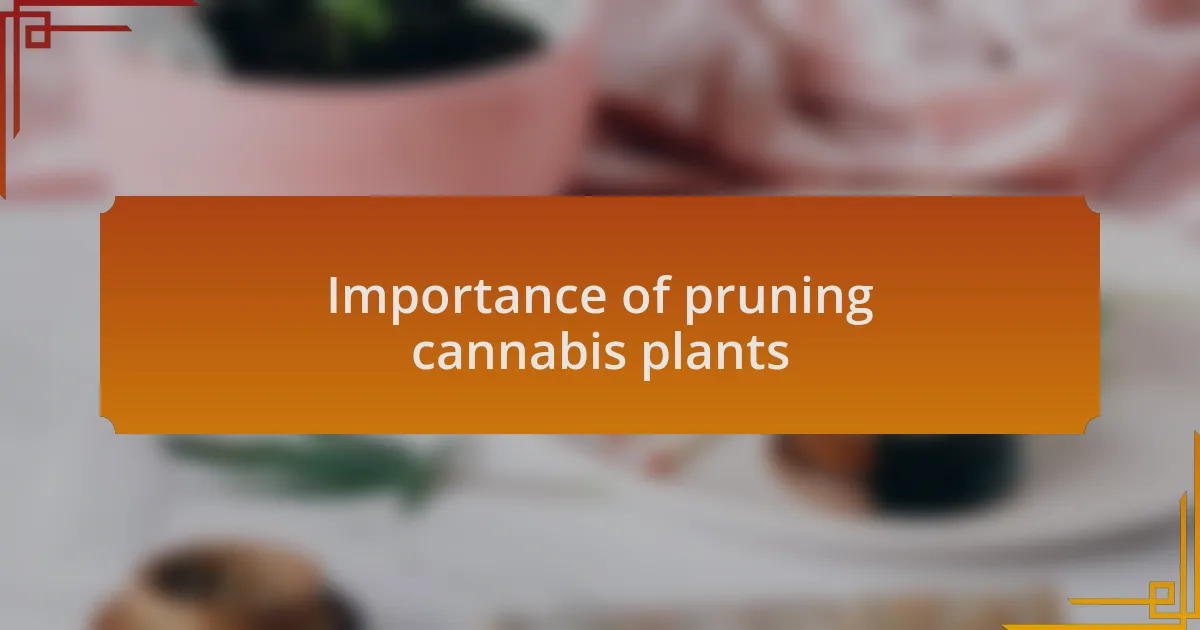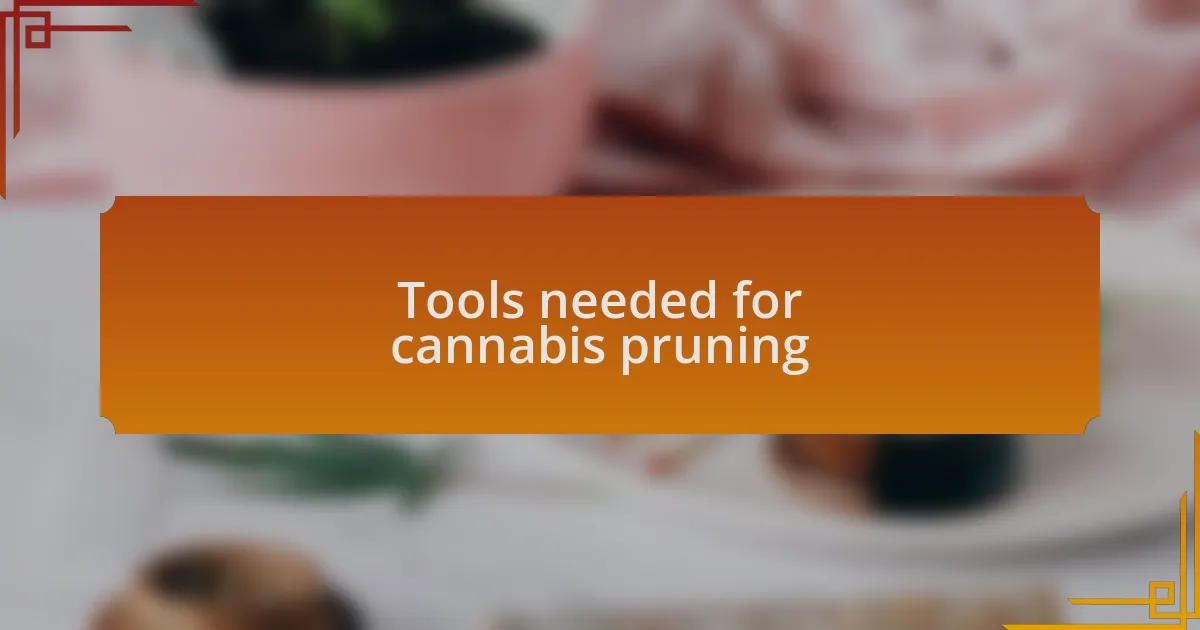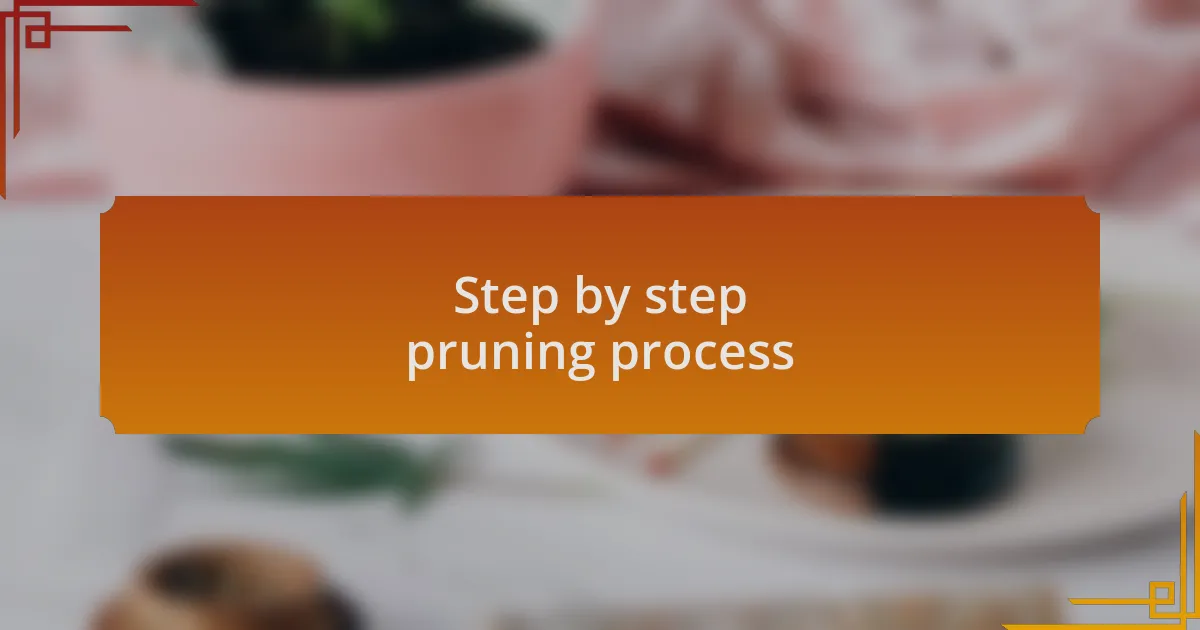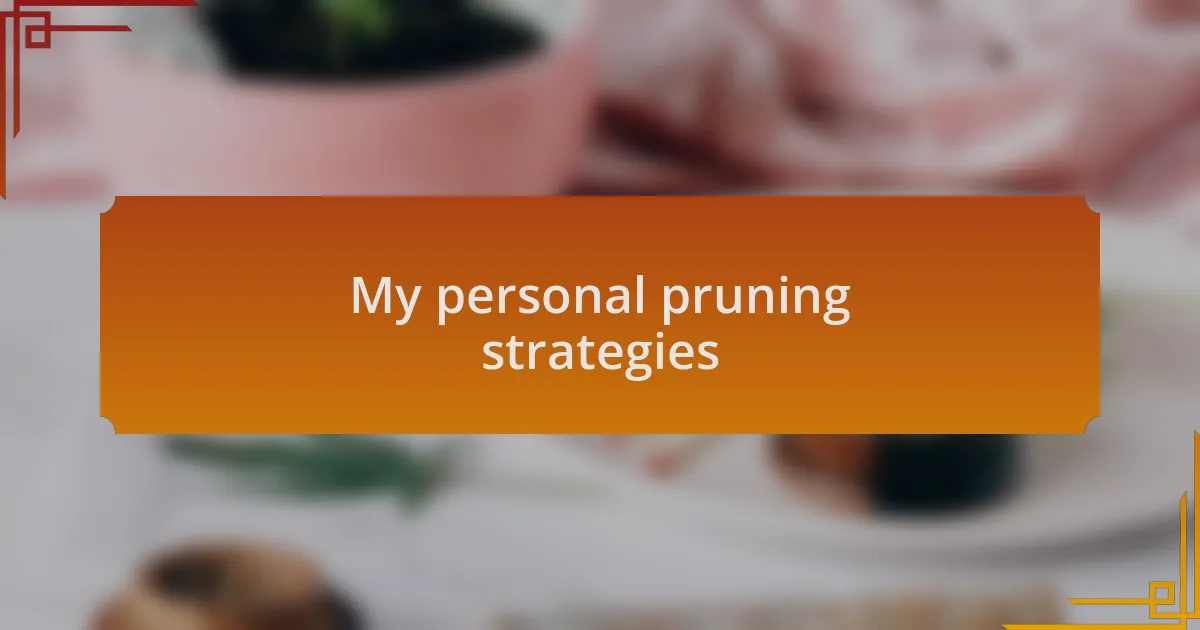Key takeaways:
- Pruning techniques like topping, lollipopping, and defoliation enhance cannabis plant health by improving airflow and light penetration.
- Proper pruning maximizes yield and ensures a balanced canopy, leading to more uniform harvests.
- Essential tools for effective pruning include quality pruning shears, garden scissors, and gloves to ensure safety and precision.
- Timing and symmetry are crucial in pruning; early pruning after the third week of flowering promotes vigorous growth and even light distribution.

Overview of cannabis pruning techniques
Pruning cannabis plants is a vital practice that I believe can significantly impact your yield and quality. When I first started growing, I was amazed by how a simple cut could lead to better airflow and light penetration, enhancing overall plant health. Have you ever noticed how some plants seem to thrive after a trim? That’s the art and science behind pruning.
There are several techniques, each tailored to achieve different goals. For instance, topping involves cutting off the main stem to encourage bushier growth, while lollipopping focuses on removing lower growth that typically receives less light. I remember the first time I topped a plant; it felt a bit counterintuitive, but the reward was a fuller canopy and a more robust harvest.
Another valuable technique is defoliation, which involves selectively removing leaves to reduce humidity and promote better light exposure. This method can feel daunting, yet it’s incredibly satisfying to see the response from the plants. Have you ever experienced that rush of seeing a healthy plant after a well-timed prune? It proves that a little attention and care can go a long way in cannabis cultivation.

Importance of pruning cannabis plants
Pruning cannabis plants is essential for maximizing yield and quality. I recall the first time I pruned a plant; it felt a bit like sculpting. With each snip, I could almost feel the plant responding—an anticipation that the growth would flourish even more. This hands-on approach allows for improved air circulation and light penetration, both crucial for healthy development.
Moreover, pruning helps in managing the plant’s structure, leading to a more balanced canopy. I often think about the impact of uneven light distribution. By removing certain branches, I find that the remaining buds get more of that precious light. This not only boosts growth but ensures a more uniform harvest—something I truly appreciate as a grower.
Beyond just practical benefits, there’s an emotional satisfaction that comes from tending to your plants. Have you ever watched a pruned plant bounce back with renewed vigor? It’s a reminder that careful attention leads to thriving cannabis. This connection reinforces the importance of pruning in creating a vibrant and fruitful garden.

Tools needed for cannabis pruning
When it comes to pruning cannabis plants, having the right tools is a game-changer. I rely heavily on a pair of quality pruning shears; they slice through stems cleanly, allowing for precise cuts that minimize stress on the plant. Have you ever tried using dull tools? It’s frustrating and can damage the branches instead of encouraging healthy growth.
In addition to shears, a small set of garden scissors is invaluable for trimming away fine growth. I remember the first time I used them—what a difference! They allowed me to reach tighter spots without disturbing the plant’s overall structure. It’s amazing how such a simple tool can elevate the quality of your pruning job.
Lastly, I can’t stress enough the importance of gloves. Not only do they protect your hands from sticky resin, but they also make it easier to grip those sharp tools. I always feel more confident when I know I’m equipped properly. Do you find that the right gear enhances your gardening experience too?

Step by step pruning process
To begin the pruning process, I always start by visually assessing my cannabis plants. I look for crowded areas where leaves overlap, as this is often where airflow is restricted. This step is crucial because proper airflow can help prevent mold and encourage healthy growth. Have you ever noticed how much livelier a well-pruned plant looks?
Once I identify those densely packed areas, I carefully select the branches I need to cut. I typically remove the lower branches that receive minimal light—these are often the least productive. This decision is based on my experience; the first time I pruned, I hesitated and later regretted not making bolder cuts. I learned that less really can be more in terms of encouraging vigorous growth in the remaining branches.
After making my cuts, I always take a moment to observe the plant’s response. I find this rewarding; watching it adapt and flourish provides a sense of accomplishment. It’s like giving my plants the gift of space to breathe and grow. Do you experience a similar satisfaction when you see your plants thrive post-pruning?

My personal pruning strategies
When it comes to my personal pruning strategies, I’ve learned the importance of timing. For me, the sweet spot is just after the third week of flowering. I remember one particular grow where I pruned too late; it stunted the plants’ development. Now, I’ve made it a point to prune early, allowing the plants to redirect their energy into developing larger buds.
I also focus on symmetry during the pruning process. I try to maintain an even canopy height, which encourages even light distribution. There was a moment when I neglected this aspect, and the plants ended up competing for sunlight, leading to uneven growth. Since then, I make it a priority to trim away any branches that disrupt this balance, ensuring that every part of the plant has a chance to flourish.
Lastly, I pay close attention to my plants’ growth patterns. After a pruning session, I keep a close eye on how they respond. Seeing the new growth is like watching a sequel to a favorite movie—the excitement never fades. I often ask myself how much more vibrant they could become, and each time, I’m pleasantly surprised by their resilience and adaptability. Have you found joy in observing how your plants bounce back?